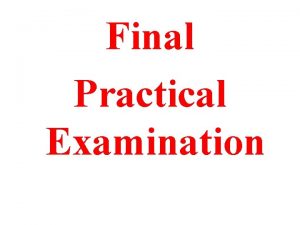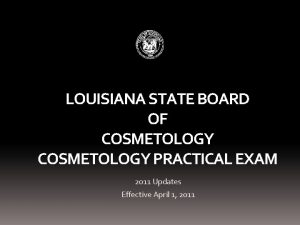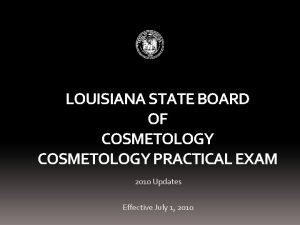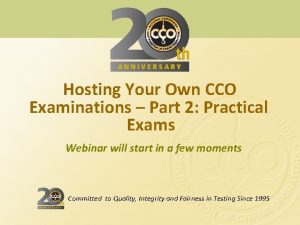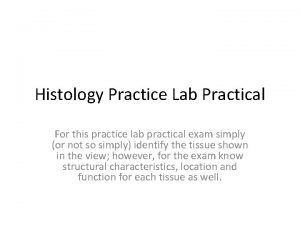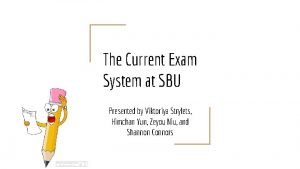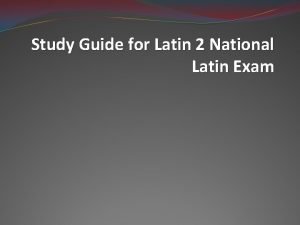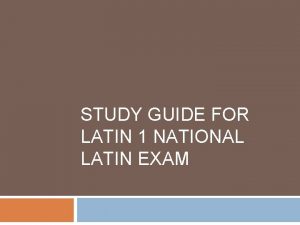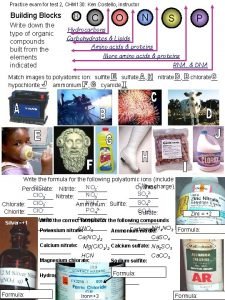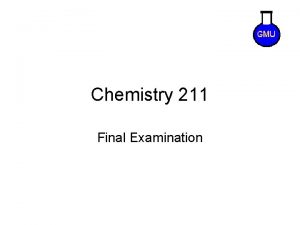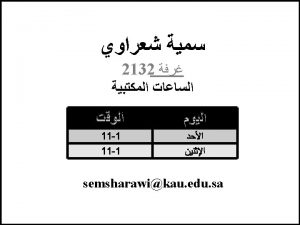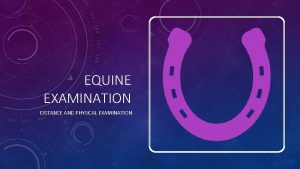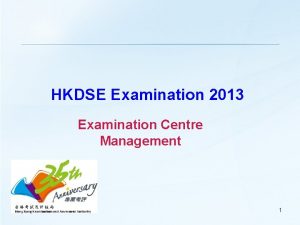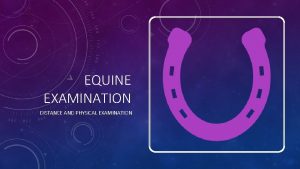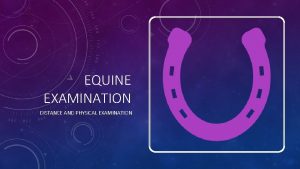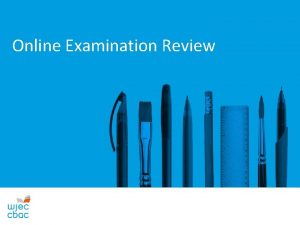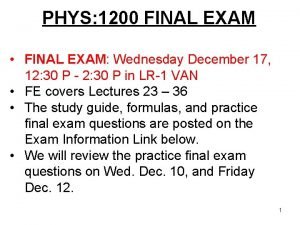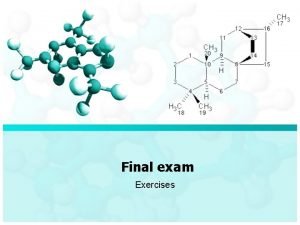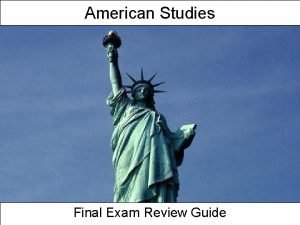Final Practical Examination Practical exam Total 40 marks


























- Slides: 26

Final Practical Examination

Practical exam. : Total 40 marks Composed of 2 parts: • Part 1: 12 marks • Part 2: 28 marks

Part 1: Data show (total 12 Marks). Formed of 9 slides: 1. Which of the following 2 clinical presentations/diseases are caused by the SAME microbial agent? Mention this microbe. (2 marks) 2. Which of the following 2 clinical presentations/diseases are caused by the SAME microbial agent? Mention this microbe. (2 marks) 3. Which of the following organisms causes ……………? (a certain disease) (1 mark) 4. Which of the following viruses causes this disease? (a photo of a certain disease) (1 mark) 5. Which of the following represents growth of ………………. ? (a certain organism) (1 mark) 6. A case of: ………. . Match the most likely causative organism (microscopic slide) with its suitable medium. (2 marks) 7. Choose & name the laboratory test that ……………. …. (1 mark) 8. Choose & name the laboratory test that ………………. (1 mark) 9. CSF report ( 1 mark)


Part 2: Demonstrations (total 28 Marks) Formed of 14 different stations (2 marks each) In case of: a) microscopic slides: mention organism + stain b) plain culture media: mention name + use c) inoculated culture media: mention name + the organism/ effect d) biochemical reactions: mention result + organism e) serological test: mention name + result/titer f) others: mention name + reading (e. g. phage-typing)


Data Show Exam Model with Answers

1. Which of the following 2 clinical presentations are caused by the SAME microbial agent? Mention this microbe. A D B C E

Answer A: Pharyngeal pseudomembrane C: Bull neck • Corynebacterium diphtheriae

2. Which of the following 2 diseases are caused by the SAME microbial agent? Mention this microbe. A B D C E

Answer D: Herpetic whitlow E: Keratoconjunctivitis • Herpes simplex virus type 1

3. Which of the following organisms causes cholera? A B D E C F

Answer D: Vibrio cholera

4. Which of the following viruses causes this disease? A B C D

Answer A: Epstein Barr virus

5. Which of the following represents growth of Mycobacterium tuberculosis? A Antitoxin D B C No antitoxin E

Answer B: Mycobacterium Growth Indicator Tube (MGIT)

6. A case of: Surgical site infection Match the most likely causative organism with its suitable medium: A 1 B C 2 3 D 4

Answer C: Staphylococci 1: Blood agar

7. Choose & name the laboratory test that is used to trace the source of infection. A B C D

Answer D. Phagetyping

8. Choose & name the test that differentiates between E. coli & Klebsiella spp. A C B D

Answer B: Indole test

9. CSF report: Glucose Test results 20 mg/dl Normal values 45 – 85 mg/dl Proteins 75 mg/dl 15 – 45 mg/dl W. B. C. s 11, 000 cells/ml mainly neutrophils 0 – 5 cells/ml v What is the most likely microscopic appearance of a stained smear from the CSF? A D B C 24

Answer B: Neisseria meningitidis

Good Luck
 Final practical
Final practical When do you use an exclamation mark
When do you use an exclamation mark Focused gi assessment
Focused gi assessment Manisha has secured 79
Manisha has secured 79 90 degree haircut state board
90 degree haircut state board State board roller set
State board roller set Nccco practical test tips
Nccco practical test tips Olecranon process vs fossa
Olecranon process vs fossa Histology lab practical
Histology lab practical Practical exam
Practical exam World history spring final exam review answers
World history spring final exam review answers World history and geography final exam study guide
World history and geography final exam study guide Web design final exam
Web design final exam Us history final exam study guide
Us history final exam study guide Sbu final exam schedule
Sbu final exam schedule Latin 2 final exam
Latin 2 final exam Latin 2 final exam
Latin 2 final exam Street law final exam
Street law final exam Spanish 2 exam review
Spanish 2 exam review Spanish 1 answer key
Spanish 1 answer key English 11 a semester exam
English 11 a semester exam Pointing
Pointing Pltw human body systems final exam review
Pltw human body systems final exam review Realidades 2 final exam
Realidades 2 final exam Chm 151 final exam
Chm 151 final exam Chem 130 final exam
Chem 130 final exam Poe final exam review
Poe final exam review
